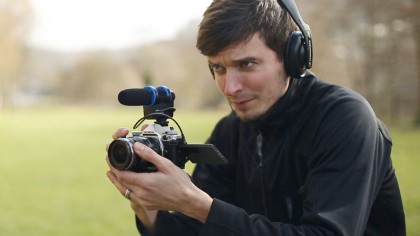Video A-Z
Baffled by video jargon? Our A-Z covers basic know-how right through to pro hardware

A variable ND filter fixes to the front of the lens and can be turned to adjust the amount of light passing through. They are occasionally useful for stills photographers, but vital for video – especially since adjusting the shutter speed is rarely an attractive option.
So why not adjust the iris (aperture) if the light changes? Because this changes the depth of field. That may not be a problem for stills photographers because the viewer has nothing to compare it to, but if the background suddenly gets sharper or blurrier in a video clip because the iris setting has been altered, it looks amateurish.
Often you'll want a sharply focused presenter (say) against a defocused but recognisable background. You can only get that with a very particular iris setting, and since you're also tied to a specific shutter speed, or a small shutter speed range, a variable ND filter becomes an almost indispensable tool for exposure control.
A lot of dedicated video cameras also have built in, selectable, rear ND filters, removing the need for a front filter.
Sign up for breaking news, reviews, opinion, top tech deals, and more.

Rod is an independent photographer and photography journalist with more than 30 years' experience. He's previously worked as Head of Testing for Future’s photography magazines, including Digital Camera, N-Photo, PhotoPlus, Professional Photography, Photography Week and Practical Photoshop, and as Reviews Editor on Digital Camera World.